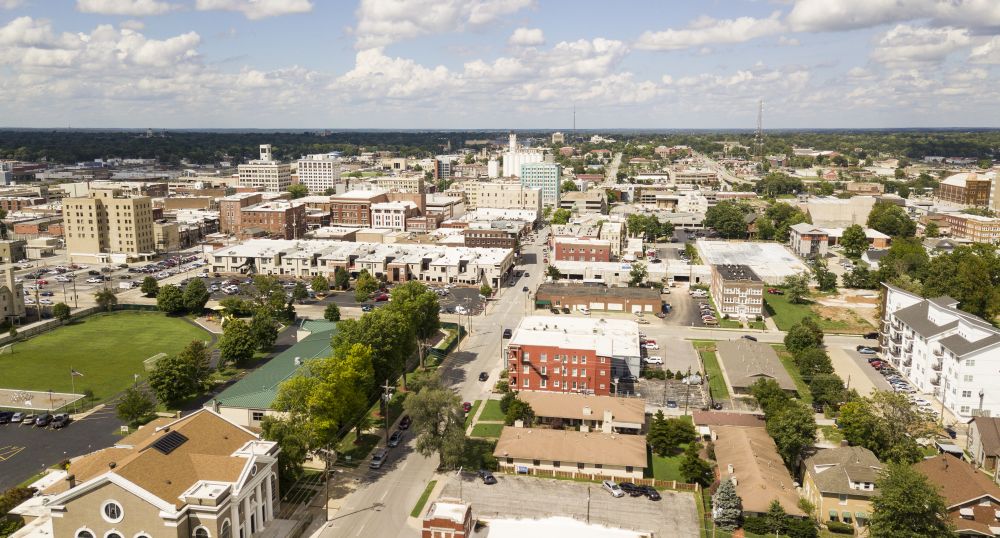As the capital of Illinois and a historic hub in its own right, Springfield is increasingly on the radar of rental property investors. In 2025, the city’s expanding healthcare sector, robust government presence, and steady economic growth are positioning several neighborhoods for impressive rent growth and strong tenant demand. Below, we explore the neighborhoods that are capturing the most attention and highlight key trends shaping their investment appeal.
Springfield 2025: A Snapshot
Rental Growth Rate: Citywide, monthly rents have climbed by an estimated 3.8% year-over-year, attributed to increased demand from young professionals, government employees, and students.
Vacancy Rates: Springfield’s overall vacancy rate stands at around 5.0%, down from 5.7% in the previous year—a signal of tight inventory and rising tenant interest.
Population Steadiness: The city’s population has remained stable, hovering around 114,000 residents. While not seeing explosive growth, the steady influx of medical professionals and remote workers seeking affordability has bolstered the rental market.
1. Downtown Springfield
Why Investors Are Interested
Revitalization Efforts: In recent years, the city has invested in restoring historic landmarks and creating mixed-use spaces, including apartments and boutique retail.
Job Clusters: With many state government offices headquartered downtown, the area attracts a steady stream of renters looking for short commutes and walkable amenities.
Key Stats
Year-Over-Year Rent Growth: 5.0%
Average Monthly Rent: $950 for a one-bedroom (compared to $905 last year)
Occupancy Rate: ~95%
Investor Tips
Historic row houses and smaller multi-family properties often provide good ROI if you factor in modest renovation costs.
Check local guidelines for short-term rentals downtown; some regulations might influence how you operate an Airbnb or similar rental.
2. Medical District (Mid-Illinois Medical District)
Why Investors Are Interested
Healthcare Expansion: Home to major facilities like the SIU School of Medicine and two prominent hospitals, the district sees a steady influx of medical professionals, researchers, and students.
Continuous Development: Ongoing expansions—research centers, outpatient clinics, and professional schools—inject new job opportunities and draw tenants who want to live close to work.
Key Stats
Year-Over-Year Rent Growth: 4.6%
Median Home Price: $185,000, up about 6% from last year
Vacancy Rate: ~4.5%
Investor Tips
Consider smaller apartments or single-family conversions tailored to medical students or young residents seeking short commutes.
Offering furnished rentals can appeal to visiting physicians or students on short-term rotations.
3. Historic West Side
Why Investors Are Interested
Architectural Appeal: This area is known for its Victorian-era homes and tree-lined streets, which attract renters who value character and charm.
Proximity to Amenities: Close to Washington Park, several schools, and neighborhood shops, Historic West Side offers a suburban feel within city limits.
Key Stats
Average Monthly Rent: $900 for a one-bedroom in a converted historic home
Year-Over-Year Rent Growth: 3.5% (steady, not skyrocketing but consistent)
Median Days on Market for Rentals: 20 days
Investor Tips
Renovation costs for older homes can be higher, so budget for plumbing, electrical, and other updates.
Historic features (e.g., original woodwork, stained glass) can justify premium rents if well-maintained.
4. West Side Suburbs (Near White Oaks)
Why Investors Are Interested
Retail & Dining Hub: The White Oaks Mall area provides ample shopping and dining options, attracting families and young professionals alike.
Steady Appreciation: While rent growth here is moderate, tenant turnover tends to be lower, offering stable, long-term rental income.
Key Stats
Year-Over-Year Rent Growth: 3.2%
Vacancy Rate: ~4.0%, indicating a consistent demand for family-friendly rentals
Average Single-Family Home Price: $210,000
Investor Tips
Single-family rentals and duplexes perform well in this suburban environment.
Focus on properties near key amenities like grocery stores, schools, and parks to attract a broad tenant base.
Factors Shaping These Neighborhood Trends
Stable Government Employment
As the state capital, Springfield enjoys a buffer from economic downturns thanks to public-sector jobs, ensuring a consistent pool of renters.
Healthcare Industry Growth
Hospitals, medical schools, and research facilities draw in a steady flow of professionals and students, boosting demand in neighborhoods near these institutions.
Quality of Life Enhancements
City investments in parks, bike trails, and arts/cultural festivals enhance Springfield’s appeal and encourage some residents to choose renting in prime locations over suburban homeownership.
Affordability Compared to Chicago Metro
Springfield’s lower cost of living and housing prices draw remote workers and retirees seeking a more affordable lifestyle without sacrificing urban amenities.
Leveraging Investment Opportunities
Stay Engaged: Monitor city council meetings or planning commission updates to identify any rezoning or development projects that might impact property values.
Diversify: Consider mixing single-family homes, duplexes, and small multi-family properties to balance the risk and spread out management costs.
Network: Partner with local brokers, property managers, or real estate groups (e.g., Capital Area REALTORS®, Illinois REALTORS®) to keep your finger on the pulse of emerging opportunities.
Final Thoughts
Springfield, Illinois, may not be the largest market in the Midwest, but it offers a unique blend of historical charm, government stability, and growing healthcare infrastructure. Investors who focus on the city’s high-demand neighborhoods—like Downtown, the Medical District, Historic West Side, and West Side Suburbs—stand to benefit from moderate yet consistent rent growth, relatively low vacancy rates, and strong tenant interest. By staying informed of local developments and focusing on neighborhoods that align with your investment goals, you can position your portfolio to thrive in Springfield’s evolving rental market.
Disclaimer: The data provided here is for illustrative purposes. Always consult local multiple listing services (MLS), economic development reports, and real-time rental comps to get accurate, up-to-date figures for Springfield, Illinois.

